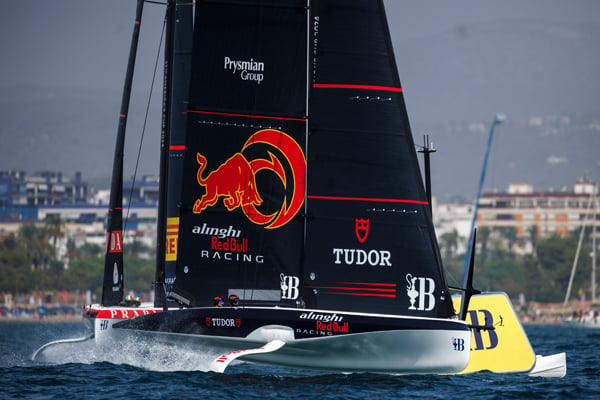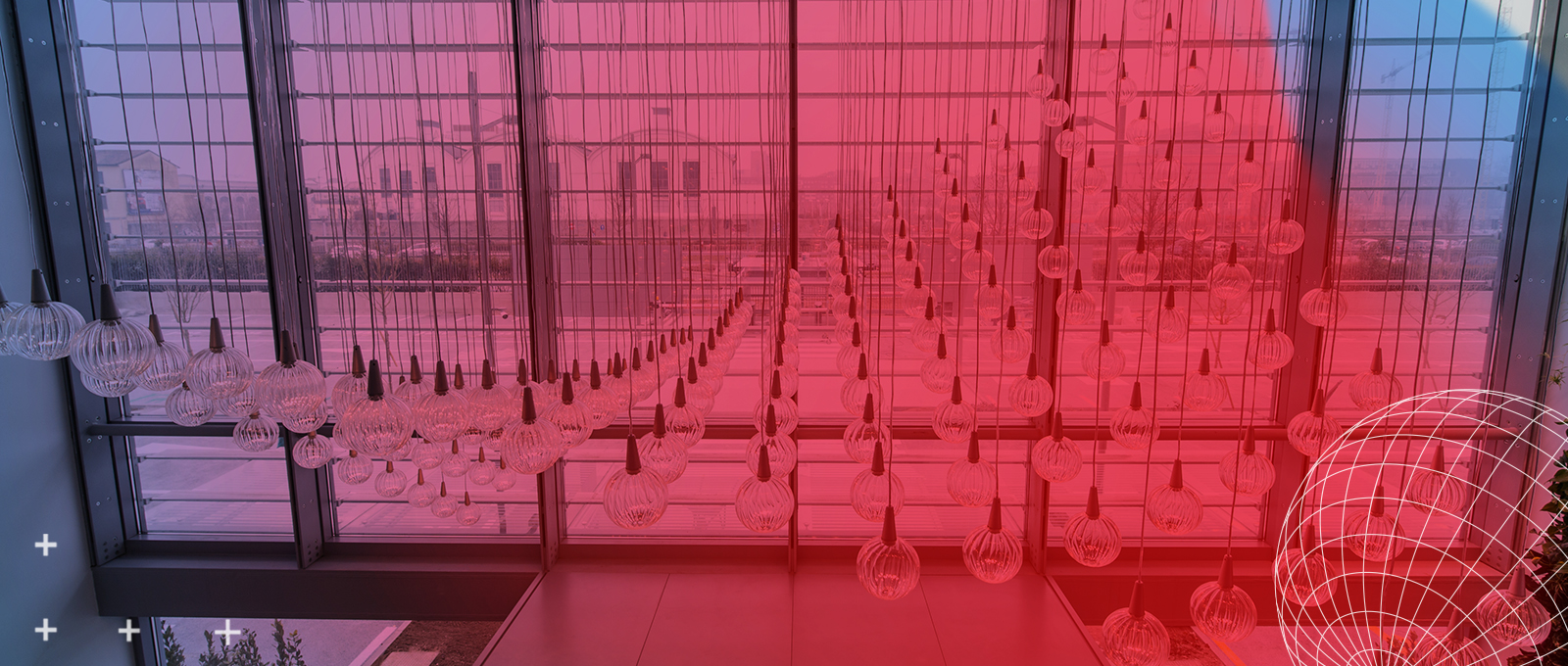Prysmian for Alinghi Red Bull Racing: interview with Silvio Arrivabene
New partnership signed between Prysmian Group and Alinghi Red Bull Racing for the 37th America’s Cup.
Following an absence of over 10 years, one of the best-known names in the history of the America’s Cup — Alinghi — officially returns to compete in the oldest trophy in international sport after signing a partnership with Red Bull. Combining the technical skills, energy and strength of the two partners, Alinghi Red Bull Racing will sail under the flag of the Société Nautique de Genève as an official challenger to the 37th America’s Cup in 2024.
Signing the partnership with Alinghi Red Bull Racing as the team's official co-sponsor, Prysmian Group confirms its commitment to the sport of sailing and the sharing of values such as innovation, ambition and teamwork. This journey, which is increasingly rooted in the Company's history, began many years ago with the historic collaboration with Giancarlo Pedote.
We had the pleasure of talking about this new partnership with Silvio Arrivabene, Co-General Manager of Alinghi Red Bull Racing.
Can you describe your role within the Alinghi Red Bull Racing team and the path that brought you here today?
I’m one of the General Managers of the Alinghi Red Bull Racing team and I'm mainly in charge of the technical-sports part. This means anything that regards the boat design, construction and maintenance and the sporting performance in its strictest sense, namely all that concerns the crew and the vehicle's performance on the water — in both human and technical terms.
This is my fifth edition of the America’s Cup. I stepped into this world as I was a passionate sailor myself. I started out as a crew member on racing boats of various sizes when I was 15. I first raced in the America’s Cup during my university years in Trieste, when Mascalzone Latino participated in the 2002-2003 America’s Cup (the thirty-first edition). In that case, I was on board the boat, I was a navigator. Starting with the next America’s Cup, having finished my studies in naval engineering in Trieste, I became interested in the technical aspects and also began to participate in the activities of the design office. In the following America’s Cup, held in Valencia in 2007, I was still with Mascalzone Latino and I began to deal also with technical coordination between what was happening on the boat and what was going on ashore.
Alinghi hasn’t raced in the America’s Cup for over 10 years. You’ve been tasked with getting the team back into the race, and in the industry's biggest competition. How does it feel to have such an extraordinary, and great, responsibility?
I won my third cup with Alinghi in 2010, and it was the best working experience for me. This is the reason why when Ernesto Bertarelli, Chairman of Alinghi Red Bull Racing, decided to come back to the race and called me, it was a huge emotion. It is an honour and a privilege to be here with this team.
The partnership with Red Bull has significantly relaunched the Alinghi name, so what I have been assigned is a new, fresh, novel mission, and what’s more, it involves foiling boats, which are certainly an innovation in our field. That is why it is undoubtedly a great responsibility for me, but one that I share with many highly qualified and valuable people: together we hope to leverage our experience and knowledge to best achieve the result we have set ourselves.

Can you tell us about the process that leads to participating in such a competition? What is the preparation process?
Typically, when an edition ends, one immediately starts preparing for the next. The department that starts to work first is that of the designers, who begin with studying and developing the boat that won the last edition: the design process starts the very next day and lasts the entire campaign, so approximately two and a half years. In the meantime, some boats are equipped for the sailing team to train: this edition has introduced the AC40, a scaled-down boat on which the crew can train in-house, thus alternating sessions in the simulator and at sea. Meanwhile, we are also building the new boat, which will be launched around spring next year. I think all the teams are more or less on the same schedule, with a view to preparing the regattas starting in mid-August.
In our day-to-day activities, the whole team lives in the same base and our offices are all open plan. That’s why there is a great exchange of information between designers, sailors and technicians, and everyone is strongly involved in all daily activities: a great synergy to make sure that we arrive as prepared as possible for the competition.
The partnership between Prysmian Group and Alinghi Red Bull Racing has been recently signed. In your opinion, what makes this synergy unique?
Certainly the fact that they are innovative and have long-term visions. For me, the key word is just that: innovation. And I've always believed that innovation is one of Prysmian Group's founding pillars. It is a vision that we too, at Alinghi Red Bull Racing, share: our foiling boats require, among other things, engineers, telemetry, simulation, measurement of hundreds of variables, sensors and fibre optics. Our business is actually at the living edge of technology, constantly looking ahead and opening up to other worlds. So, I think our vision and our way of working are very similar to those of Prysmian and, in my opinion, it is a winning synergy precisely because there is potential for growth and progress for both.
In your opinion, which is the role of sailing as a sport that promotes sustainability and environmental awareness?
Our boat is certainly propelled by the wind, but the four chase boats that follow it with their combustion engines a little less (laughing - Editor's note). After all, in terms of safety, we cannot do without them, at least for now. However, in this edition of the America’s Cup, each team must have a hydrogen chase boat. They are still prototypes, but they will be on the race course to replace traditional, combustion-powered boats. So, in this regard, the America’s Cup is certainly opening up to sustainability.
In addition, at our Barcelona base, we have solar panels on the roof and a desalination plant to desalinate seawater and use it for the base’s running water needs. In this way, we are committed to tackling the drought problem in the Catalonia area. We have a number of measures in place also for recycling certain materials used in the construction of the racing boat, the one that will be ready next year. Certainly, we try to pay great attention to all these aspects.
So, as I said before, our sport is green in itself, but for now there is no alternative as far as chase boats are concerned. However, we are moving in the right direction on that front as well. Hydrogen boats might become an established technology in future editions and fully replace internal combustion engines, who knows.

Prysmian is committed to promoting employee empowerment and having a positive impact on local communities. How does Alinghi Red Bull Racing manage to build a healthy collaboration between all the parties involved in the project, from the team to the community?
First of all, our team consists of about 150 people with different nationalities. For us, what counts is the ability of the individual — regardless of gender and origins — and diversity is certainly an added value. Moreover, one thing we are very proud of is the fact that we have an HR Department, which should not be taken for granted for an America’s Cup team.
We have also built strong relationships with the local area: we have a network of local suppliers and rely on financial, legal and security service providers in the area; even our base was built by a local company.
Through the Red Bull network, we have also organised various local events regarding sports and our team, as well as a race, Wings for Life, whose proceeds go to spinal cord research. So, we are strongly committed to the local area, it’s something we care a lot about, and the city has adopted us as its home team. We are very happy about this.
In terms of gender balance, have you seen an evolution within the America’s Cup?
For me, this is the most gender-balanced edition. It’s not 50-50 yet, unfortunately, but at the moment we have about 25 women in our team, and a good number of them in technical roles — in the design team, in the construction team in Switzerland, in the sea sailing operations, marketing and administration areas. In my experience, this is the team in which we have achieved the greatest presence of women, and I consider this an extraordinary added value.



